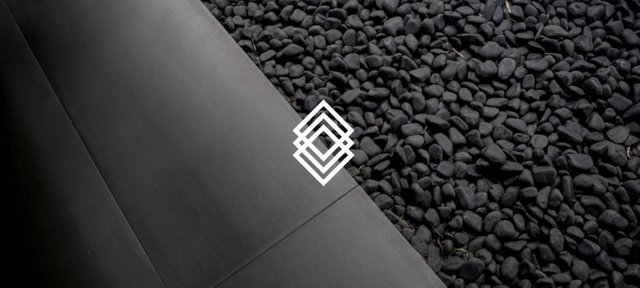How DAOstack intends to be the ‘Internet of Work’

Introduction
From times immemorial, humankind has relied on collaboration with each other for various economic interactions, and the means of collaboration have steadily evolved over the years – from families & tribes to states, organizations and multinational corporations.
As the organizations grow in size, the coordination cost increases and inefficiencies creep into the system. Organizations, thereby, get restricted in their ability to grow indefinitely. The innovation of the Internet, the most advanced organization, tried to address the scalability issue by enabling peer-to-peer real-time information exchange on a global scale. However, as the Internet does not support open, peer-to-peer exchange of value and general-purpose coordination, it cannot provide the solution for an indefinitely scalable and open global economic collaboration.
In this scenario, Blockchain Technology is proving to be a game changer by providing a platform for creating Decentralized Autonomous Organizations (DAO).
DAO’s are the new age, self-organizing, scalable collaborations operated by smart contracts on the blockchain. DAO can be best referred to as an open yet self-organized network that is driven by crypto-economic incentives. DAO provides a revenue model and incentive for the effective production of the open, shareable resources. Through the creation of more and more open resources, DAOs enable indefinite scalability, which is not possible with the traditional organizations.
Although considered the future of business, DAO’s are still being bogged down by the lack of a robust governance system. That means, there are no effective means of taking decisions, that too within a short span of time, in the DAO’s. Unlike traditional organizations, intentionally, the DAO’s are not built on the concept of a hierarchical and centralized decision-making mechanism. Vesting decision powers with individuals based on the ownership of cryptocurrency will render the system corrupt and untrustworthy!
DAOstack aims to tackle these issues smartly.
DAOstack, the ultimate solution
DAOstack provides a holographic governance framework that is infinitely scalable. DAOstack enables quicker and resilient decision making. Holographic refers to the ability of a minority of individuals taking unbiased decisions that are in the best interests of the greater majority!
Secondly, instead of laying down the ground rules in advance and rendering the system rigid, DAOstack allows flexibility by providing a governance framework that is configurable by organizations as they evolve.
Most importantly, DAOstack is designed to provide accessibility to even non-technical individuals to configure any essential changes to the decision-making process or even set up a decentralized organization. Software developers, even without prior knowledge of blockchain technology, have the ease of access to building dAPPS on DAOstack’s backend.
The process of developing the decentralized applications [DApps] has become more comfortable with the DAOstack as enormous open-source creators can jointly produce them without losing the individual ownership for the product. The collaborations are scalable with the DAOstack and that the DAOs are configured at a glance. The critical components of DAOstack are:
Arc: To progress the DAO governance effectively, a robust framework has been formed with a blend of adaptive modular and upgradable smart contract governance modules. Arc is designed based on the design principles of openness, generality, simplicity, upgradability, interoperability, and modularity!
Arc.js: This is one of the most useful elements for the front-end developers, as, Arc.js provides a framework wherein, the development of the DApps are initiated without getting into the complexity of the blockchain technology.
ArcHives: Refer to the shared and curated records or the registries in the DAOStack ecosystem.
Alchemy: The ultimate gateway to the DAO, Alchemy is the native interface for the DAOstack. It is the tool for budgeting and resource allocation. Using this interface, thousands of individuals with a common goal can interact with each other and agree on how to spend funds.
DAOstack Monetization Model
Attention is the monetization resource, and GEN is the attention token in the DAOstack ecosystem. To firm up decisions, the attention of voters is needed. This human attention is monetized in the form of GEN tokens and is similar to ‘gas’ in the Ethereum blockchain. These tokens do not buy decisions but only buy attention for proposals.
One can place a stake for or against a proposal which may or may not be passed by the reputation holders. If the stake placed by an individual (for or against) gets passed accordingly (for or against), on the DAOstack ecosystem, then he/she will be awarded GEN tokens. The individual may lose his/her GEN if the stake is not passed in case of a ‘for’ vote and vice versa.
As mentioned earlier, DAOstack achieves the resilience and scalability in the decision-making using the holographic consensus concept – similar to a hologram in which each little piece of the 3D image contains the information of the entire picture.
Conclusion
DAOstack intends to be the ‘Internet of work’ housing a host of interoperable DAOs who can openly interact with one other, including sharing ideas, learnings and talent with each other. DAOstack’s vision is to create an infinitely scalable, boundary-free and collaborative economy, where there is no disproportionate distribution of power and people are collectively working towards a common goal and are incentivized in alignment with their contributions!
DAOstack strives for an open and collective intelligence on a global scale, driven by crypto-economics!
For more information on DAOstack watch the video below or go to their Website or Twitter